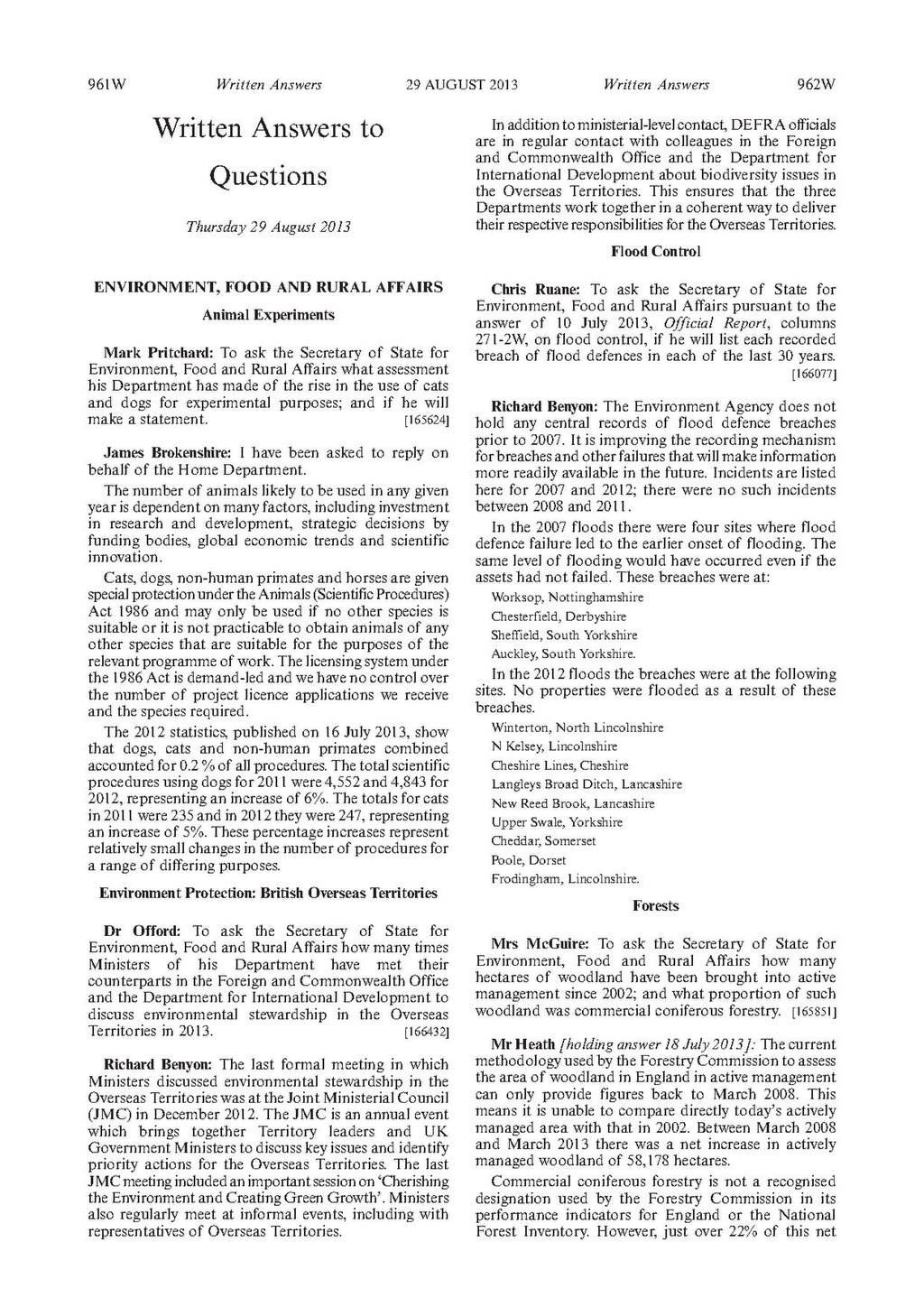Written Answers to Questions
Thursday 29 August 2013
ENVIRONMENT, FOOD AND RURAL AFFAIRS
Animal Experiments
James Brokenshire: I have been asked to reply on behalf of the Home Department.
The number of animals likely to be used in any given year is dependent on many factors, including investment in research and development, strategic decisions by funding bodies, global economic trends and scientific innovation.
Cats, dogs, non-human primates and horses are given special protection under the Animals (Scientific Procedures) Act 1986 and may only be used if no other species is suitable or it is not practicable to obtain animals of any other species that are suitable for the purposes of the relevant programme of work. The licensing system under the 1986 Act is demand-led and we have no control over the number of project licence applications we receive and the species required.
The 2012 statistics, published on 16 July 2013, show that dogs, cats and non-human primates combined accounted for 0.2 % of all procedures. The total scientific procedures using dogs for 2011 were 4,552 and 4,843 for 2012, representing an increase of 6%. The totals for cats in 2011 were 235 and in 2012 they were 247, representing an increase of 5%. These percentage increases represent relatively small changes in the number of procedures for a range of differing purposes.
Environment Protection: British Overseas Territories
Richard Benyon:' The last formal meeting in which Ministers discussed environmental stewardship in the Overseas Territories was at the Joint Ministerial Council (JMC) in December 2012. The JMC is an annual event which brings together Territory leaders and UK Government Ministers to discuss key issues and identify priority actions for the Overseas Territories. The last JMC meeting included an important session on ‘Cherishing the Environment and Creating Green Growth’. Ministers also regularly meet at informal events, including with representatives of Overseas Territories.
In addition to ministerial-level contact, DEFRA officials are in regular contact with colleagues in the Foreign and Commonwealth Office and the Department for International Development about biodiversity issues in the Overseas Territories. This ensures that the three Departments work together in a coherent way to deliver their respective responsibilities for the Overseas Territories.
Flood Control
Richard Benyon: The Environment Agency does not hold any central records of flood defence breaches prior to 2007. It is improving the recording mechanism for breaches and other failures that will make information more readily available in the future. Incidents are listed here for 2007 and 2012; there were no such incidents between 2008 and 2011.
In the 2007 floods there were four sites where flood defence failure led to the earlier onset of flooding. The same level of flooding would have occurred even if the assets had not failed. These breaches were at:
Worksop, Nottinghamshire
Chesterfield, Derbyshire
Sheffield, South Yorkshire
Auckley, South Yorkshire.
In the 2012 floods the breaches were at the following sites. No properties were flooded as a result of these breaches.
Winterton, North Lincolnshire
N Kelsey, Lincolnshire
Cheshire Lines, Cheshire
Langleys Broad Ditch, Lancashire
New Reed Brook, Lancashire
Upper Swale, Yorkshire
Cheddar, Somerset
Poole, Dorset
Frodingham, Lincolnshire.
Forests
Mr Heath [holding answer 18 July 2013]: The current methodology used by the Forestry Commission to assess the area of woodland in England in active management can only provide figures back to March 2008. This means it is unable to compare directly today’s actively managed area with that in 2002. Between March 2008 and March 2013 there was a net increase in actively managed woodland of 58,178 hectares.
Commercial coniferous forestry is not a recognised designation used by the Forestry Commission in its performance indicators for England or the National
Forest Inventory. However, just over 22% of this net